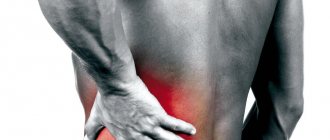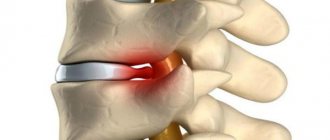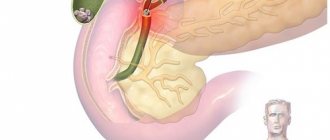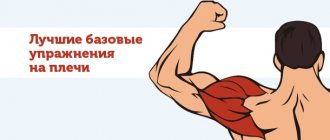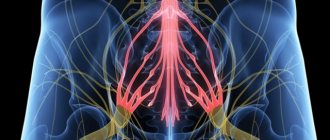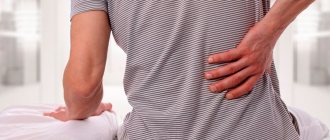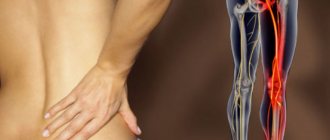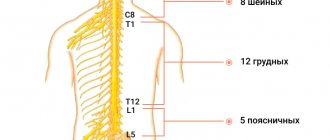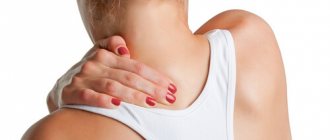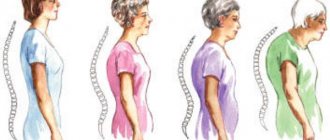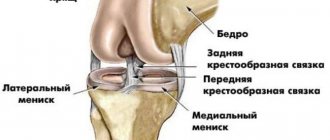Many people have neck pain. Almost every person has encountered this unpleasant phenomenon at least once in their life. Sometimes the pain goes away on its own, sometimes it torments us for several days, and sometimes the pain in the neck does not leave a person for several years, becoming chronic.
Often people do not attach much importance to neck pain, but in vain. After all, such a habitual ailment can be a sign of a serious illness.
The sensations of neck pain vary depending on the cause that causes them. In this article we want to look at a symptom such as simultaneous pain in the neck and shoulder.
Painful sensations in the neck and shoulders, especially if the sensations are symmetrical, can be a manifestation of two problems:
- Muscle strain
- Cervical osteochondrosis
Why does my neck hurt?
Pain is a defense mechanism that nature has provided our body with. It occurs when cells die - due to injury, hypoxia or for some other reason. When cells break down, they send a chemical signal to the immune system to attack.
The immune system reacts not only to viruses and bacteria; removing the remains of dead cells is also its job. Substances released during cell destruction and those produced by scavenger cells cause inflammation - the body's defense response, which is expressed in pain, redness, swelling, decreased functionality and a local increase in temperature. In this way, the body simultaneously creates the best conditions for the speedy recovery of the damaged area and provides it with peace.
It would seem that, for example, the left shoulder and neck on the left hurt, could the reason be due to cell damage? We didn’t injure them, we just sat there. But since we did this in an incorrect, tense position, the muscles spasmed and blocked their own blood flow. Hypoxia set in, and with it pain. Because of the pain, the tension in the muscles increased: they tried to defend themselves. But things only got worse. This situation is called a vicious circle. To interrupt it, you need to restore blood flow.
There are diseases in which pain in the neck and shoulder on the right, left or both sides is an important symptom. These are dystrophic changes in the cervical spine (osteochondrosis, spondylosis), inflammation of the tissues surrounding the shoulder joint (humeral periarthrosis), a tumor process (neurinoma), inflammation of the nerve plexuses of the vertebral nerves (plexitis). Therefore, when pain occurs for the first time, you need to consult a doctor. He will determine whether we are talking about muscle tension or illnesses of varying degrees of severity.
Muscle strain
Muscle strain, which causes pain in the neck and shoulder girdle, can be of three types. In the first case, this is the influence of decay products accumulated in the muscles, which are formed after unusual physical activity. For example, the day before you played sports, carried heavy bags, and led an unusually active lifestyle.
The second type of muscle strain is staying in a static position for a long time. For example, you often work at a computer for a long time or take long trips while driving a car. Our spine is not designed for such long-term static loads and, in order to keep it in the correct position, the muscles of the back and neck do enormous stabilizing work, which leads to their overwork.
The third type of muscle strain is caused by chronic stress. During stressful conditions, our body instinctively prepares for danger by keeping all muscles in a state of fight-or-flight preparation. And, although we know that often there is no physical threat, the muscular corset, squeezed in endless preparation for saving our lives, experiences incredible stress.
A regular massage can help if you feel pain in your neck and shoulders from muscle strain. It will increase the flow of blood and lymph, relax cramped muscles, increase the regenerative functions of the body and help you feel freedom of movement and lightness in the body. Warming sports ointments also enhance the effect.
Such different pains
Harmless (but very unpleasant) pain from muscle tension in the neck and shoulders usually goes away without affecting skin sensitivity or numbness. This differs from the lumbar region, where myofascial syndrome can cause a feeling of numbness, as powerful muscles press on the branches of the sciatic nerve.
With osteochondrosis or spondylosis of the cervical spine, there is pain between the neck and shoulder, in some cases the pain from the neck spreads to the shoulder of the left or right arm. The pain can be either unilateral or symmetrical. Intense pain of aching or drilling nature is provoked by physical activity, especially improper exercise. The symptoms of a herniated disc are very similar.
Humeral periarthrosis, or “frozen shoulder,” has three stages of development: first, the neck and shoulder hurt more and more on the left or right side. Then, due to pain, neck movements become limited, or even simply impossible. The scapula area is also affected.
Neuroma - a benign formation of nervous tissue - will manifest itself during movements: turning or bending. If the formation grows, then pain may occur at rest.
Plexitis is inflammation of the nerve plexuses. If the neck is affected, then the pain from there will radiate to the shoulder, and if it is the shoulder, then the pain in the shoulder will radiate to the neck. With this disease, the pain is acute, it is accompanied by muscle weakness and decreased sensitivity of the affected limb. As a rule, the lesion is unilateral.
With myositis (muscle inflammation), the affected area will be hot to the touch and clearly not the same as the one that is symmetrical to it. The pain is very strong.
Left shoulder pain
The shoulder joint is the most unique joint in the human body in terms of its structure and functional ability. At the same time, improper and excessive physical stress on the shoulder joint leads to local inflammatory processes leading to local swelling, joint effusion, and even partial ruptures of the tendons and muscles surrounding the shoulder joint.
The shoulder has one thing in common with a conventional mechanism: it can withstand abuse only up to a certain limit, after which its functions become impaired. For you, such violations result in pain.
Mechanism of pain in the left shoulder
Upper shoulder pain may originate from the neck. This pain spreads along the entire length of the arm (including the hand), intensifies with neck movement, and may be accompanied by numbness or parasthesia. When examining the cervical or thoracic spine, an intervertebral hernia is often detected.
Damaged intervertebral discs of the cervical or thoracic spine lose their elastic properties over time, become flattened, and the distance between the vertebrae decreases. This means that the nerve roots extending from the spinal cord are pinched and pain occurs. swelling appears in the area where the neurovascular bundle is clamped , which leads to even greater pinching and increased pain. Capsulitis is a rare condition of painful stiffness in the shoulder girdle muscles. In this condition, there is a limitation in the amount of abduction of the arm to the side when it is raised up and the impossibility of placing the affected arm behind the back. This condition often develops gradually, unnoticed by the patient.
A rotator cuff injury occurs after abnormal movements of the arm. On the day the work is completed there are usually no complaints. The next day, sharp pain in the left shoulder when trying to remove something from the top shelf. During the examination, the degree of tension in the muscles of the shoulder girdle and the range of movement in the left shoulder joint are determined. Radiographs of the joint will usually show no changes. Tendobursitis occurs when reactive inflammation of the shoulder joint bursae is caused by calcifications of the muscle tendons. Characterized by acute pain in the left shoulder and significant limitation of both active and passive movements in it. Usually severe pain in the neck, shoulder and arm areas.
Causes of pain in the left shoulder
One of the most common causes of left shoulder pain is inflammation of the tendons surrounding the shoulder joint. These disorders are called tendonitis . Most often they arise from excessive stress. When you cut wood or play golf, tendons rub against bone. This results in irritation and pain. Biceps tendinitis (the muscle on the inside of the upper arm that runs from the shoulder to the elbow area) causes chronic pain that increases with movement and palpation. In the case of a complete rupture of the biceps tendon, a balloon-shaped swelling appears on the shoulder. Bursitis, the bedfellow of tendinitis and the culprit of left shoulder pain, is also associated with overuse. However, it manifests itself in a wider range of disorders: pain is accompanied by swelling in the area of the joint capsule - a soft sac surrounding the joint. If you have pain in your left shoulder when you lift your arm, it may be due to calcium deposits causing calcification of the joint ligaments. These salt deposits occur in the tendon that runs under the shoulder blade and collarbone. These disorders are called “collision” syndrome. Most often these processes occur at the age of 30-50 years. Left shoulder pain usually occurs suddenly, is intense and constant. Movements in the joint to abduct the shoulder from the body by 30-90 become painful. Sometimes the deposition of calcium salts in the joint is discovered by chance, while still asymptomatic, during an X-ray examination for another reason. Pain in the left shoulder can be associated with traumatic injuries, less often tumors and hereditary anatomical abnormalities. A fall can cause the humerus to become dislocated in such a way that the upper arm literally flies out of the socket of the joint. When trying to cushion a fall while leaning on the arm, the tendons of the muscles that rotate the arm may rupture. If such injuries are left untreated, permanent impairment of shoulder function may occur over time. Joint injuries, in addition to accidents, often occur in athletes or young people. In the latter case, recurrent shoulder dislocation often occurs. In adults, injuries to the structures of the shoulder joint occur due to aging, tissue wear, or developed osteoporosis (a disorder of calcium metabolism in the bones). Left shoulder pain is one of the most common problems among bodybuilders, along with lower back, knee and elbow pain. A shoulder injury like this can make a number of exercises in your training program impossible. There are many reasons for this, the main one being instability of the shoulder joint.
The likelihood of a shoulder hyperextension increases significantly in key movements such as the bench press, dumbbell flyes, machine curls, and overhead presses. Pain can occur as a result of stress in the joint capsule of the shoulder girdle and excessive work of its muscles, which try to maintain the central position of the head of the humerus in the joint capsule for proper functioning of the joint. In addition, pain can result from a tear in the cartilage ring located along the glenoid cavity.
The cartilaginous ring performs several functions: it deepens the articular cavity and serves as additional support for the articular capsule and the tendon of the long head of the biceps. Often, pain in the left shoulder develops in connection with a disease of the internal organs and spreads to the shoulder with the following diseases:
- liver pathology;
- myocardial infarction;
- angina pectoris;
- pneumonia;
- cervical radiculitis;
- tumors of the chest organs.
The main manifestation of glenohumeral periarthrosis is pain in the left shoulder. The pain often begins gradually without an obvious trigger, is progressive, often wakes the patient up at night, and significantly affects the performance of daily activities. Movement of the joints is painful in several directions.
Pain in the arm can include pain in the left shoulder, forearm and hand and can be of a different nature: burning, aching, shooting. Pain in other parts of the body may radiate to the arm. The course of the disease varies from several weeks to several months. The outcome is also different - from complete recovery (even without treatment) to the development of a blocked shoulder, and in case of shoulder-hand syndrome - also impaired hand function. Depending on which shoulder tendons are diseased, pain in the left shoulder occurs with various movements. Limited muscle function results in indicating the cause of the limitation. Pain in the left shoulder when moving the arm to the side or when moving it then forward indicates changes in the supraspinal tendon.
Pain in the left shoulder with outward rotation of the upper arm with the elbow joint pressed to the body indicates changes in the infraspinal tendon . Pain in the left shoulder when internally rotating the upper arm with the elbow joint pressed to the body indicates changes in the subscapularis tendon. Pain in the front of the shoulder when internally rotating the forearm against resistance often indicates long biceps disease. Other causes of left shoulder pain:
- Impigmentation syndrome (narrowing syndrome).
- Tendon rupture/rotator cuff tear.
- Forearm calcification/tendon calcification.
- Inflammatory shoulder diseases are an important exclusion diagnosis.
- Pain in the left shoulder can also be caused by neurogenic pathology, which is manifested by paresis, muscle wasting and sensitivity disorders (cervical radiculopathy, cervicobrachial plexopathy, neuropathy, complex regional pain syndrome, neuralgic amyotrophy, myelopathy).
- The presence of protrusions or herniations of intervertebral discs in the cervical and thoracic spine.
- Pain in the left shoulder may be reflected pain of a muscle in myofascial syndrome, the tendon of which is woven into the joint capsule.
- Arthrosis, arthritis of the left shoulder.
If you have pain in your left shoulder, you should consult a doctor. Consult a podiatrist (preferably with experience in sports medicine) or a sports physician who specializes in joint problems. There can be many causes of left shoulder pain, and you need an accurate diagnosis to determine treatment options.
What will help with pain
Treatment for neck and shoulder pain depends on the cause. If serious changes in the joints or bones of the spine, a herniated disc or other serious diseases are detected, you cannot be treated according to advice from the Internet; you need a doctor.
If you are sure that the muscles of the neck and shoulders are simply tightened, treatment may be as follows:
- warming ointments with capsaicin, bee or snake venom (be sure to make sure that you are not allergic to them or over-irritate your skin);
- anti-inflammatory ointments or gels, for example, diclofenac;
- if the pain is severe, you can take NSAIDs orally (which ones, the doctor should tell you at the appointment);
- home devices for magnetic therapy or UHF - but not mechanical massagers, they are used only outside of exacerbation;
- light, pain-free massage;
- warm bath (but always under the supervision of someone close, you may feel dizzy).
If these measures do not alleviate inflammation of the neck and shoulder muscles, treatment must be adjusted based on the results of the visit to the clinic.
Reasons why the neck hurts a lot and radiates to the shoulder
Before treatment, it is necessary not only to make an accurate diagnosis, but also to identify all potential causes and risk factors. Their elimination ensures that there is no risk of re-development of the disease that causes the pain syndrome.
So, the neck hurts a lot and radiates to the shoulder most often with the development of the following pathological processes:
- cervical osteochondrosis (degenerative dystrophic damage to the cartilage tissue of the intervertebral discs);
- protrusion of the intervertebral disc (a decrease in its height and an increase in the occupied area, due to which a compressive effect begins to be exerted on the radicular nerves, their branches and other paravertebral soft tissues);
- intervertebral disc herniation (rupture of the fibrous ring against the background of total dehydration and loss of elasticity and the release of part of the nucleus pulposus to the outside);
- destruction of intervertebral joints (deforming spondyloarthrosis);
- instability of the position of the vertebral bodies and discs, their periodic displacement relative to each other according to the type of retrolisthesis, antelisthesis and laterolisthesis;
- injuries of soft and hard tissues, leading to fractures, cracks of the vertebrae and their processes, dislocations and subluxations, sprain and rupture of ligaments and tendons, muscles, the formation of extensive hematomas;
- cicatricial deformation of the ligamentous and tendon apparatus of the spinal column;
- dystrophy of the muscular framework of the neck and collar area;
- development of cornerstone osteophytes on the vertebral bodies;
- sclerosis of the endplates separating the vertebral bodies and intervertebral discs;
- stenosis of the spinal canal due to the adverse effects of external and internal factors;
- tumor growth;
- plexitis (inflammation of the brachial plexus).
There are a number of risk factors, in the presence of which a person is highly likely to develop a particular disease. The appearance of pain in the neck that radiates to the shoulder is characterized by the presence of the following negative factors:
- poor posture or curvature of the spinal column;
- maintaining a sedentary lifestyle;
- predominantly sedentary work, in which the muscles of the neck and collar area are tensed statically for a long time;
- excess body weight;
- injuries in the neck and collar area;
- wearing tight and uncomfortable clothes;
- improper organization of sleeping and working spaces;
- lack of regular physical activity on the neck and collar area, as a result of which the intensity of microcirculation of blood and lymphatic fluid decreases here.
Before starting treatment, the doctor gives the patient individual recommendations on identifying and eliminating all negative factors. This allows you to quickly relieve pain and ensure that there is no risk of its return.
The left or right shoulder hurts and radiates to the neck - what is it?
Patients often come in complaining that their shoulder hurts and radiates to their neck; they are interested in what kind of disease this is and how treatment can be carried out safely and effectively.
Let's try to answer as briefly and clearly as possible. So, if your left shoulder hurts and radiates to your neck, then you need to carry out a thorough differential diagnosis with pathologies of the cardiovascular system. In this way, coronary heart disease may manifest itself with unstable functional angina. In fact, this can be regarded as a pre-infarction state. Therefore, visiting a doctor should be modern.
A distinctive feature of this condition is the absence of any unpleasant sensations in the patient when trying to palpate the cervical spine and shoulder joint. If there is still pain when pressing on the spinous processes, then you should contact a vertebrologist.
In all other cases, make an appointment with a cardiologist. And if the pain behind the sternum is very severe and does not go away within half an hour, then you need to call a cardiology ambulance team.
If the right shoulder hurts and radiates to the neck, then the examination begins with x-rays of the cervical spine and shoulder joint. In the image of the spinal column, the doctor may notice a reduced height of the intervertebral spaces, which will indirectly confirm the fact that there is a compressive effect on the radicular nerves and their branches. An image of the shoulder joint can reveal a decrease in the height of the joint space, the development of osteophytes, and incorrect position of the head of the humerus in the glenoid cavity of the scapula.
If there is pain in the neck, shoulder and radiates to the arm, then an MRI examination may be performed to rule out glenohumeral periarthritis. This disease often provokes excessive tension in the muscle fiber. And this is the reason for the development of pain syndrome.
With cervical osteochondrosis, pain in the neck on the left side radiates to the shoulder on the same side. Diagnosis requires an MRI examination. It shows the condition of the intervertebral cartilage discs. Eliminates the possibility of developing protrusion, extrusion and intervertebral hernia.
Treatment for neck and shoulder pain
After the diagnosis is made, when the doctor already understands why pain in the neck on the right or left radiates to the shoulder, a course of treatment is developed. It allows not only to stop the development of the pathological process, but also triggers the regeneration of damaged tissues. In our manual therapy clinic, only methods of treatment that are absolutely safe for human health are used.
For example, if the neck hurts on the left, radiates to the shoulder, and a protrusion of the intervertebral disc is diagnosed, then treatment begins with several sessions of manual traction of the spinal column. This procedure allows you to safely restore the normal height of the intervertebral spaces. Pressure from the root nerves is relieved, and the patient experiences a significant improvement in his condition. His pain goes away and his mobility is restored. However, this does not mean complete recovery. In the future, the doctor develops an individual course for restoring the health of the spinal column.
It may include the following types of therapeutic effects:
- osteopathy to enhance the processes of microcirculation of blood and lymphatic fluid in the foci of degenerative dystrophic lesions of the cartilaginous tissues of the intervertebral discs - trophism improves and the healing process is accelerated;
- massage to restore normal tone and performance of the muscles of the neck and collar area (they provide diffuse nutrition to the cartilage discs and their restoration);
- kinesiotherapy and therapeutic exercises improve the process of diffuse nutrition of the intervertebral discs, replenish their fluid reserves, restore normal height and shock-absorbing ability;
- reflexology – influencing biologically active points on the human body helps to launch disc regeneration processes by using the body’s hidden reserves;
- physiotherapy stimulates metabolic processes at the cellular level.
If you have neck pain on the right (or left) and radiates to the shoulder, then make an appointment for a free appointment with a vertebrologist or neurologist at our manual therapy clinic. An experienced doctor will give you an accurate diagnosis and tell you how to conduct a full examination of the health of the spinal column. As needed, you will receive recommendations to eliminate all potential causes of spinal diseases. An individual course of treatment will be developed for you, during which you will completely restore the health of your spinal column.
